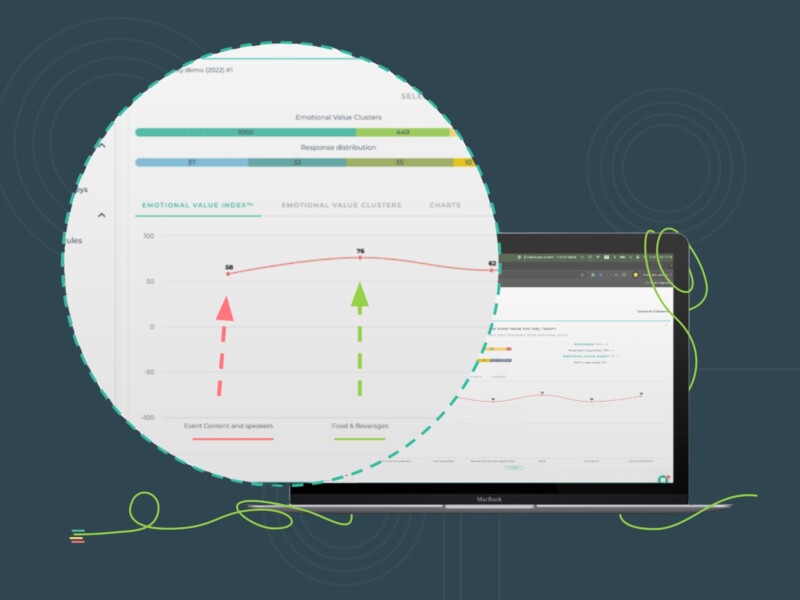EVI® is a CX metric designed to measure customers’ emotional experience with the brand. It is a KPI that helps you track, measure, and analyze how customers feel about your business and understand its impact.
The benefit of Emotional Value Index (EVI®) is that it can be applied to any phase of the customer journey, both at the micro and macro level. You can use it to identify pain points and improve the overall customer journey. For a comprehensive measure, use EVI® with other metrics like NPS, CES, and C-SAT. The EVI® score can also provide context to the results of other KPIs.
Here’s how you can use EVI® to keep track of customer emotions at different stages in the customer journey.
1. Awareness
It is at this stage that customers come in contact with your brand. It is important to portray your brand appealingly to make them consider purchasing the product or service. Using an EVI® survey, you can ask how the customer feels about the brand at first glance.
Compare the survey results and score with the growth in the email database to identify how the revenue has been impacted by the emotions. For example, a positive score will often be backed by a growth in the number of people signed up for newsletters and promos. It signifies a rise in potential revenue.
2. Consideration
If the customer shows an interest in the product, you must showcase the benefits of the product and the perks of being a customer of your business very clearly. EVI® can help you determine if they feel connected to the brand and like to give it a go.
After customers browse the products online or on-site, you can send an EVI® survey asking how they felt about the experience. It can be using a pop-up embedded on the website or a Feedbackly terminal installed at the store.
3. Purchase
During the purchase phase, the goal is to find out how customers perceive the shopping experience emotionally. If the process of the selection of products, adding them to the cart, and completing the purchase was enjoyable, the EVI® surveys will bring a positive result. You can use website widgets, Kiosks, and POS to gather data.
You can compare the EVI® score with the purchase size to determine if customers were motivated to buy more. EVI® can also be compared with CES to gauge how an effortless purchase process leads to a joyful experience.
4. Delivery
The delivery process of the product also plays a great role in retaining customers. If they face a cumbersome delivery process due to delays, wrong products, or damaged goods, they may not consider doing business with you in the future. So, ask them how they felt about the delivery of the products using an EVI® survey via email or SMS and improve it. You can compare the results with the number of support cases raised with customer care.
5. Product/Service
In the post-purchase phase, you can send out an EVI® survey to know if customers are satisfied with the product or service they purchased. If the product meets the customer’s needs and is easy to use, the score is likely to be very high. You can reach out to them via email or SMS.
Correlating the results with reviews left by customers on Google, social media pages, and other channels can be useful. It can show the chances of attracting new customers and increasing sales.
6. Loyalty/Advocacy
It is more cost-effective to retain an existing customer than attracting a new one. Customer loyalty is the mark of a great customer experience, and EVI® can give you an accurate insight into how customers feel.
You can send out the surveys via email and SMS. Customers who denote joy or enthusiasm in the EVI® survey are more likely to be your advocates. Your business can benefit from word-of-mouth marketing, referrals, and repetitive purchase. Compare your EVI® results with NPS and customer retention rate to find out if you nailed it right!
Download your free EVI® eBook here:




